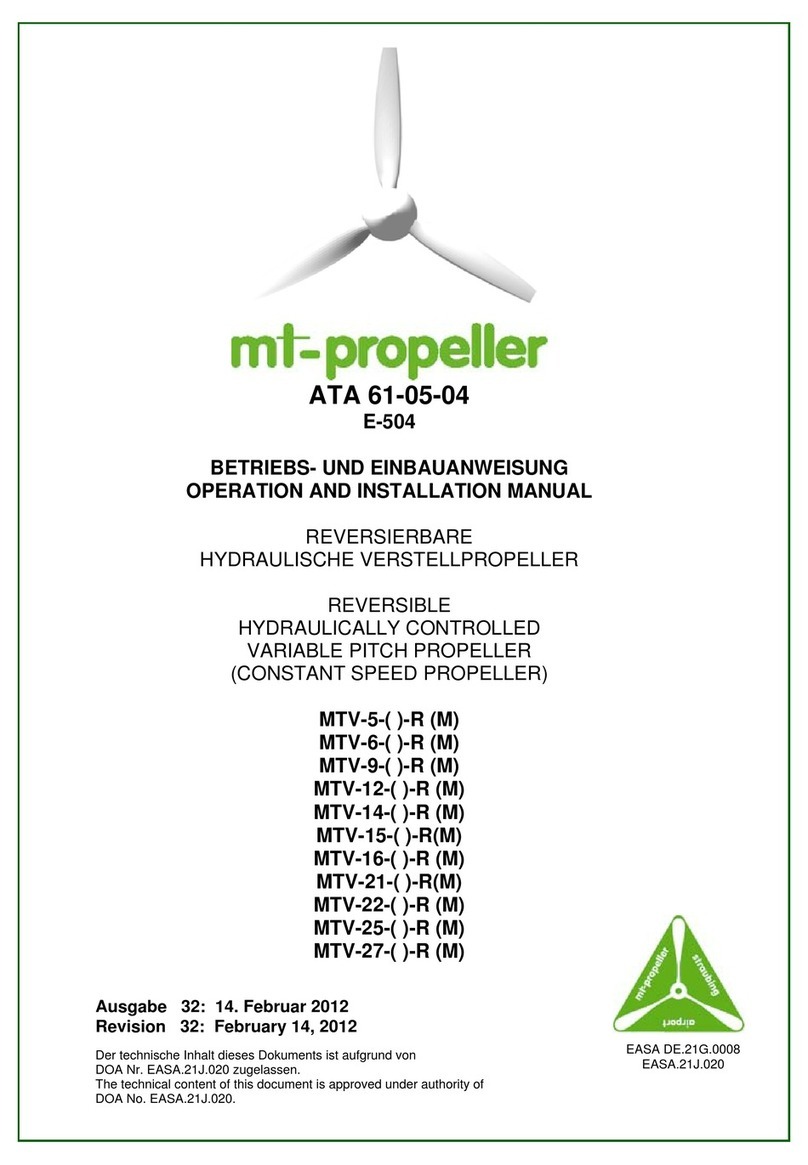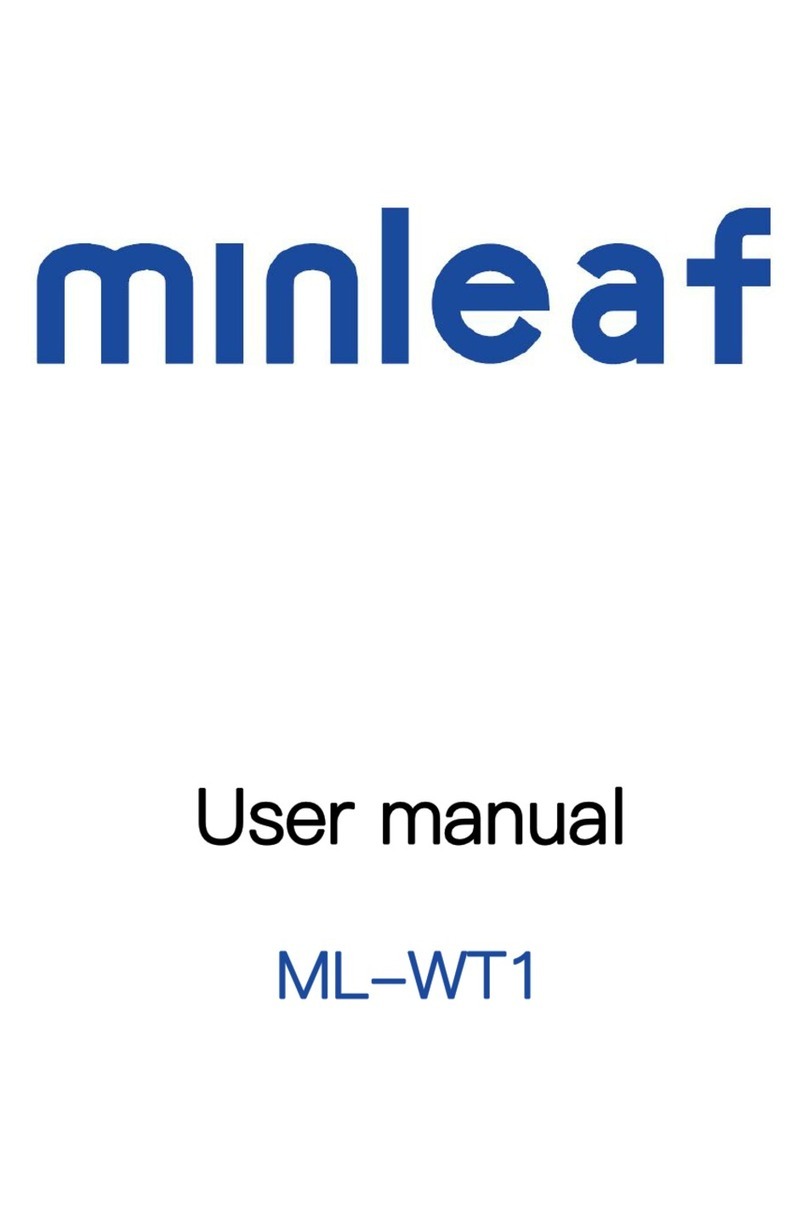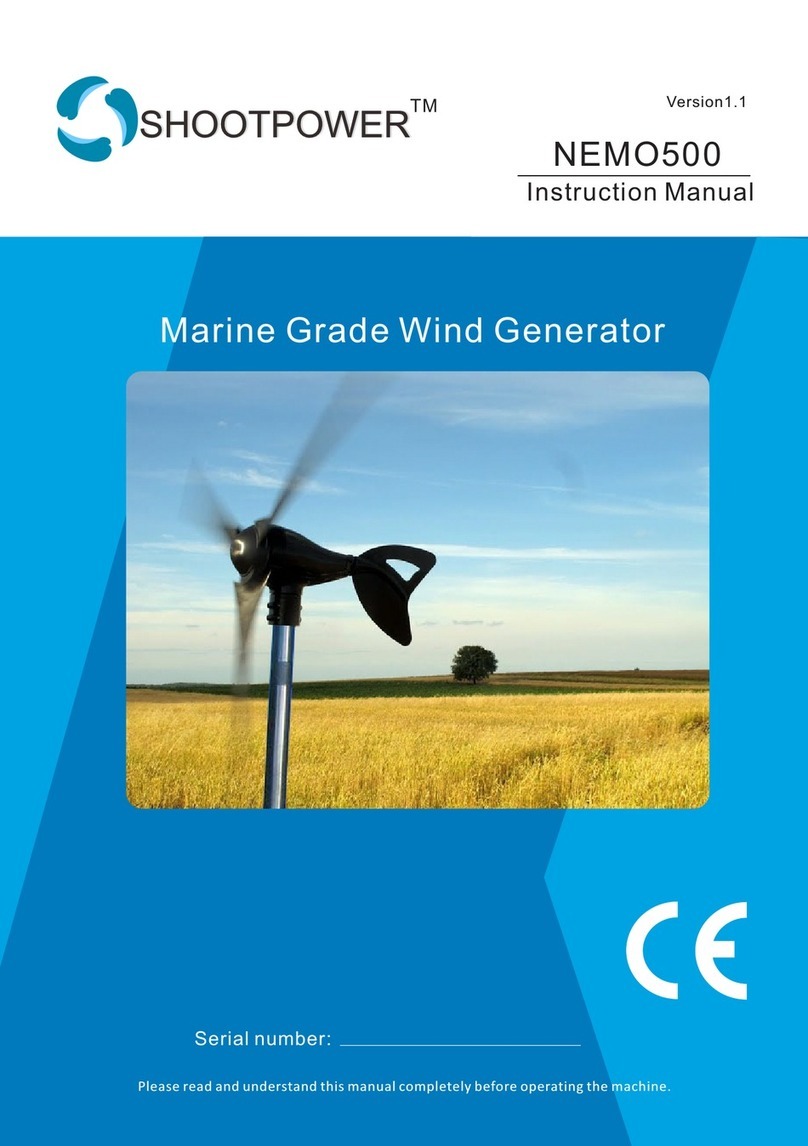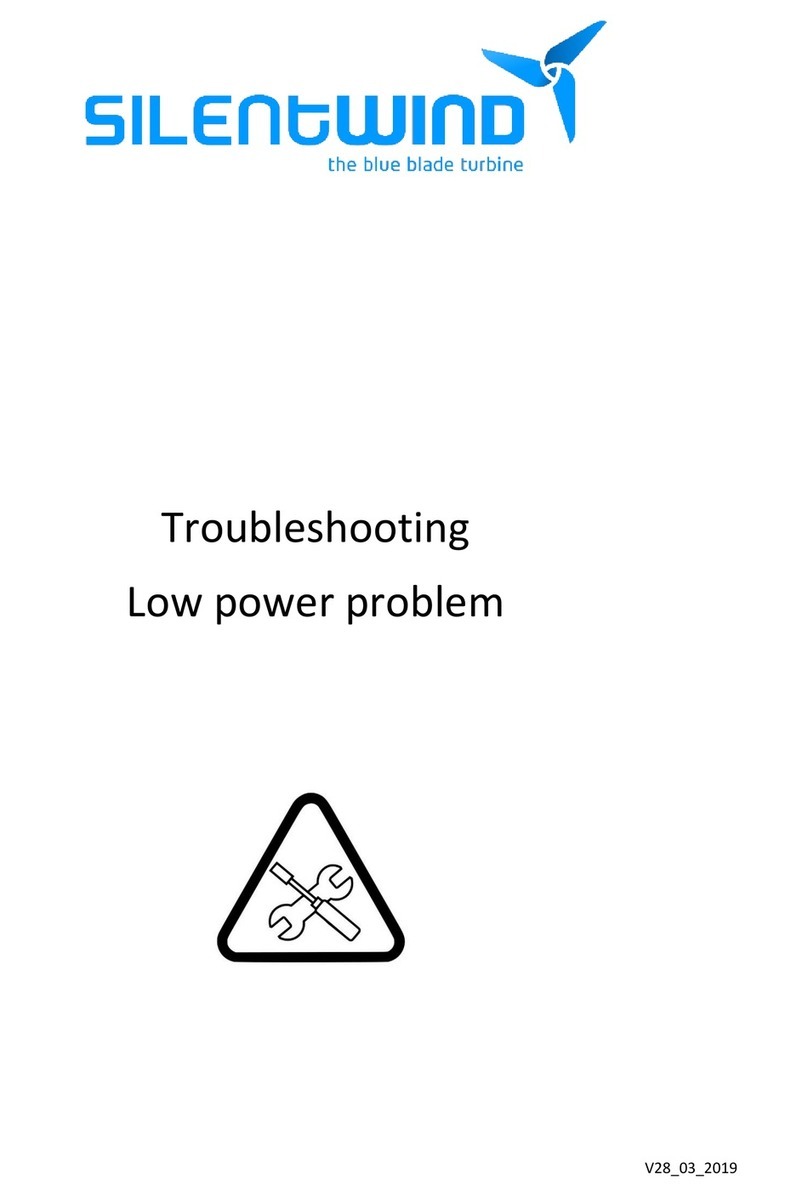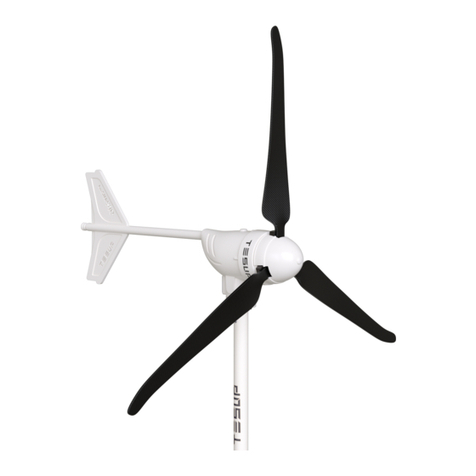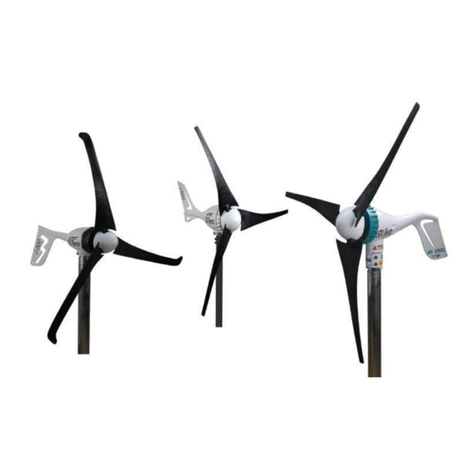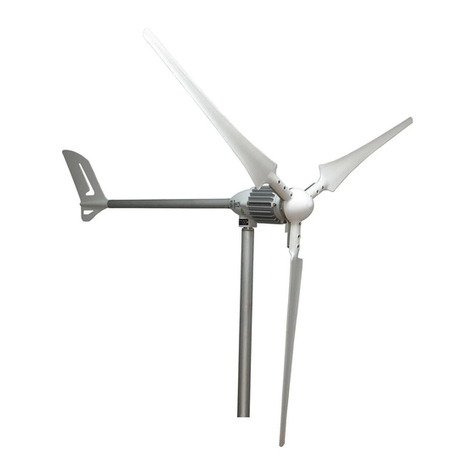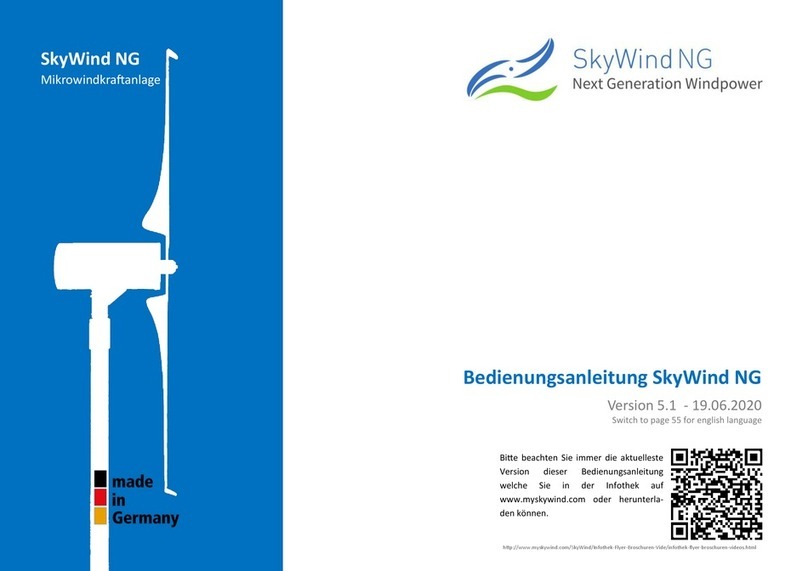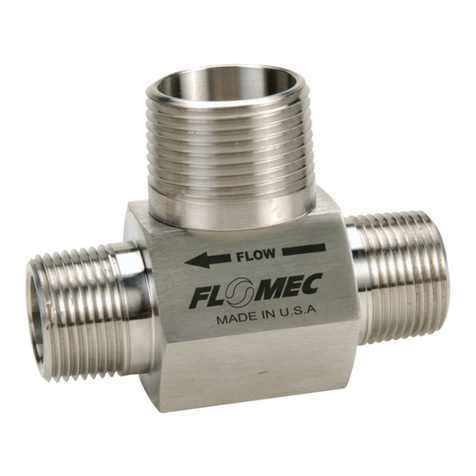AeroDesignWorks B100F User manual

operating manual
B100F / B140F

operating manual B100F / B140F 2019-06-27 1
Dear R/C model making enthusiast!
Congratulations for the purchase of the
B100F / B140F
jet engine! This
is the ultimate engine for your R/C jet plane. Please read these instructions
carefully after receiving your jet engine and before the first operation. Keep
this manual for later consultation.
1. Directions for safe operation
1.1. eneral safety instructions
1.2. Warning
1.3. Before starting the turbine
1.4. During operation
1.5. After shut off
2. Mounting of the engine
2.1. Mounting options
2.2. Safety rules for the attachment of the jet engine
2.3. Assembly of the complete system
3. Operation of the jet engine
3.1. First operation
3.2. First testing
3.3. Control functions
3.4. Tuning options / electronics
. Legal disclaimer
5. Maintenance instruction
5.1. Maintenance
5.2. Repairs
6. Warranty
7. Technical data
8. Wiring plan
9. Illustration

operating manual B100F / B140F 2019-06-27 2
1. Directions for safe operation
1.1. General safety instructions
Even though jet engines are different from piston engines, it is easy to
safely operate and fly them when you follow some basic safety rules.
With this goal, the as Turbine Builders Association GTBA has created a
Code of Practice. It is available in multiple languages and can be found on
the TBA website (www.gtba.co.uk/codes/).
It is mandatory to read this Code of Practice before mounting the jet engine
and follow the recommendations when mounting and operating the
engine.
The operation of any jet engine can be dangerous. This also holds true for
the B100F / B140F. During operation, the jetwash and parts of the jet
nozzle become very hot; the nozzle can reach up to 700 °C. In addition,
the turbine fans do reach very high rotary speeds, which leads to extreme
tensile loads and temperatures. Therefore, it cannot be excluded that parts
of failing turbine fan wheels and broken fans will strike through the housing
which can lead to damage and even injury or death.
Study the operation mode and the dangers of operation before using a jet
engine. In case you have no experience with the operation of gas turbines
and jet engines, instruction by an experienced person, especially before
initial operation, is mandatory. Errors in mounting and operation of a jet
engine can lead to damage, injury, or death.
Follow national laws concerning aircraft, the operation of jet engines, and
the handling of combustible liquids and gases. You are exclusively
responsible to have sufficient insurance when operating aircraft. You are
also responsible to protect other persons from injury and danger.
Operating personnel and their assistants must be in best physical and
mental condition and pay full attention to the operation.
This engine must only be used for unmanned operation in R/C aircraft.
The instructions in this manual must be exactly followed.

operating manual B100F / B140F 2019-06-27 3
Follow the safety rules!
Non-adherence of the following safety rules can be fatal!
This device was manufactured to the highest current technological
standards. It must only be used for the purpose it was designed for.
This device can, however, be a danger to people, animals and things when
not operated according to the purpose it was designed for
the instructions in the manual are not correctly followed
it is changed or rebuilt
This manual introduces you to a safe operation of the device.
Therefore, careful reading and thorough understanding of the
manual is vital before operation the device.
Every person who is involved in the operation of this device must read this
manual, especially the instructions for safe operation.
Furthermore one has to follow the laws and general rules of
the avoiding of accidents
technical safety, as generally valid and accepted
the country one wants to operate the device in
Moreover,
jet engines and turbines in general must only be operated with
the highest diligence
ear protection must be worn during operation to avoid hearing
damage
indoor operation is forbidden
a fire extinguisher (CO2) must be within reach!
1.2. Warning
Consider the basic differences between gas turbines and piston engines.
Turbines will deliver power only at high rotation speeds. Then there will be
a lot of power.
Higher loads occur when driving an R/C aircraft model with a turbine
compared to equally powerful drives like propellers or impellers.
This is a result of considerably higher air speeds caused by jet propulsion.

operating manual B100F / B140F 2019-06-27 4
Maximum speeds under jet propulsion can exceed 400 km/h, depending
on the model.
The resulting loads effect the whole structure, not only the rudders or the
installation of the servo wires.
Models have to be constructed with jet aircraft specific stability. Please ask
manufacturers about the current level of production standards for the
models in question. Meanwhile, a large array of models built for jet
propulsion is available by different manufacturers. Servos should be at
least 1.5 times stronger than for comparable models with conventional
engines.
During installation, seal the intake and nozzle, as well as propane and
kerosene joints to keep dust and debris out of the engine.
Really make sure to:
first inform, then buy
have the fitting size model for your turbine
select servos that are powerful enough
construct servo wiring and rudder joints very carefully and
reinforced
seal the turbine during the installation process
1.3. Before starting the engine
Tank system, pump, shut-off kerosene valves and turbine must
be checked for correct alignments.
Loose parts in the intake area must be fixed in a way they can
never be sucked in. Loose parts or dirt can damage or destroy
the turbine. We recommend the use of a protection screen.
Have a fire extinguisher (CO2) within reach!
The kerosene system must not be leaking.
Use only kerosene or Diesel with a 5% fraction of lubrication
(fully syntethic 2-stroke mix oil or turbine oil).
Take off must be against the wind.
Hold the turbine with the nozzle facing downwards right before
take off so excess fuel can run off to avoid a hot start of the
engine.

operating manual B100F / B140F 2019-06-27 5
1. . During operation
Always keep in front of the turbine (intake facing), never to the
side or in the exhaust area of the turbine.
Also make sure that no other persons or animals are present
in the mentioned dangerous areas.
Keep your hands and every kind of object out of the area within
20 cm of the compressor (intake). The enormous suction can
grasp everything within reach lead as quickly as a flash and
lead to severe injury or damage.
Never look into the jet exhaust. Severe burns can be the result.
1.5. After shutting off the engine
Place model with the nose facing the wind. Wait until the
cooling down process is completed.
Be aware of the cooling process after engine shut down.
During this process, the electric power supply of the receiver
and the ECU must not be turned off. The cooling down process
takes 1 – 2 minutes, depending on outside air temperatures.
Do not touch the turbine during the cool-down because the
danger of burning still exists.
All tube connections must be inspected for leakage. The fuel
tanks must be emptied in case of extreme outside
temperatures or when there is no upcoming operation planned
(danger of explosion!).

operating manual B100F / B140F 2019-06-27 6
2. Installation of the turbine
2.1. Attachment options
The attachment points of the bracket to the frame must be
parallel (check before attachment). Otherwise bad tensions
can lead to damage of the engine.
Attach the turbine only with the provided bracket, screws und
bushings.
The ignition plug has to be facing upwards, at twelve o’clock
when seen from the turbine front end.
Should you have deviating wishes concerning turbine
installation, contact the manufacturer.
2.2. Engine mounting rules
The engine must be installed
in a way that the area between
ignition plug and cerosin plug
is in the 12 o’clock position.
(see picture) This is absolutely
vital for a kerosine start of the
B100F / B140F engine. Else,
the start, i.e. the ignition,
would fail and might even lead
to engine damage.
There must not be any combustible objects near the turbine.
The turbine must not be touched by combustible objects.
The nozzle and the whole area within reach of the jet exhaust
must be clear of any objects.
In case of a housed in installment of engine the rear end of the
installation area and any parts which affected by the jet
exhaust should be protected with non-combustible materials
(danger of fire!). When an extension of the nozzle is
necessary, it must be constructed and installed to the

operating manual B100F / B140F 2019-06-27 7
manufacturer’s specifications.
The turbine must be installed in a way that it can be cooled by
a bypassing air stream.
Combustible liquids and gases as well as tanks and tubes must
be kept or installed in safe distance of the engine.
The intake area (impeller / compressor) must be kept clear.
Any wires, tubes, etc. must be installed and fixed in a way they
cannot be sucked into the turbine. In general, there should not
be any objects or installations close to the front end of the
turbine.
The intake section of the model should have at least twice the
area of the impeller/compressor wheel.
You must make sure that no objects, e.g. rocks, dirt, screws,
etc., can be sucked into the turbine. It is a good idea to protect
the turbine intake with a close meshed screen (accessories).
The intake area must be absolutely kept clear.
2.3. Assembly of the complete system
Please look at the installation scheme as well as the
illustration.
The optimum size of the fuel tank depends on the model but
should be at least 1.7 liters. The optimum size for the B100F /
B140F
is 2 - 3 liters, which is enough for an average air time
of 6 – 8 minutes, depending on your style of flying. For further
information please see technical data, fuel consumption. There
must be a felt pendulum in the tank. Use only the included felt
pendulum.
The tank set up can be realized with a so called Hopper tank
(please see installation scheme “engine fuel supply”. The felt
pendulum only can be installed in the Hopper tank; there must
be a free passage to the other tanks of 3 mm diameter
(minimum).
Use yellow, highly flexible Tygon tube and attach it to the pump
with a cable connector. Tank accessories, pendula, etc. can be
found in the AeroDesignWorks line up.
The fuel pump must be installed directly behind the tank. Be
careful to install the pump correctly (brass fitting = draw side).
The electric wiring of the pump has to be done with the correct
polarity (+ / -). If the pump is not wired correctly, it will not work
right and will transport no fuel
Install the fine filter in the pressure tube behind the fuel pump

operating manual B100F / B140F 2019-06-27 8
(out). After that, a Festo Y quick connector should follow; red
and blue tube with 4mm diameter should be used there. There
the kerosene supply is divided; the connection to the fuel
valves is next. The flow direction is very important, it is marked
with an arrow. The valves are marked with “Kerosin” and
“Ignition”.
The electric connection of the valve “Kerosin” to the ECU is
done at the “KERO-VALVE” input. The fuel supply of this valve
is connected to the turbine at the “Kerosin” input. (blue line)
The electric connection of the valve “Ignition” to the ECU is
done at the input “PROP-VALVE”. The fuel supply of this valve
is connected to the turbine at the “Ignition” input. (red line)
All FESTO quick connectors (blue head) are self-locking.
They are connected and disconnected like this: Insert tube
strongly. There is no resistance for the first 6mm but for the
next 6mm (approximately) resistance can be felt. Only then the
tube is perfectly locked in. For release, push the blue cap in
the direction of the metal piece and remove the tube by pulling.
Now the turbine should be electrically wired to the ECU:
Connect the turbine via high voltage wire to the ECU at the
Glow / Starter output. Also connect the black data cable to the
turbine and the Sensors input of the ECU.
Then connect the I/O Interface with the ECU at the
“Terminal“ connection. Later the EDT (operation terminal)
can be connected to the I/O Interface. The I/O Interface serves
as control interface; it features acoustic and optic control. The
control interface needs not necessarily be installed in the
model.
Power supply:
Rechargable 3S LiPo batteries (max. 12V) of at least 2500mAh
must be used. Connect the battery to the “BATTERY” input of
the ECU. Disconnect the battery from the ECU when not in use
to prevent discharge. Mind the right polarity at the high voltage
plug! Longish battery wires should be twisted!
At last, connect the receiver to your ECU. Now the cable is
readily prepared. Only use original adaptor cables if other
receiver plugs are necessary. The ECU is only operated by one
input channel (engine power limiter).

operating manual B100F / B140F 2019-06-27 9
3. Beginning of turbine operation
3.1. Initial operation
Fill the fuel tank with kerosene. Ensure a 5% proportion of oil.
Make sure the tank breather is open!
Filter your fuel already when filling up through the preceding
fine filter.
Make sure the electric power supply battery and the receiver
battery are charged.
Test the reach of your remote control with and without the ECU
turned on.
Place the model always with the nose against the wind so the
direction of the jet exhaust equals the wind direction.
Turn on the sender and the receiver unit.
The Pro-Jet ECU is mostly pre-adjusted and tuned to your
turbine. Nevertheless, you have to adjust the ECU to the
remote control unit.
To do this, follow the ProJet instruction on page 18, activate
manual point 2.1 “Abgleich / adjustment”, trim and throttle back
– Enter, trim forward – Enter, Throttle forward – Enter. Sender
is now adjusted.
Make sure that no sender functions like Dual Rate, Expo,
distance limit, etc. are programmed!
It is necessary to de-aerate the fuel tube before the first
operation in a new model. That means the fuel tube must be
filled with kerosene. Do this manually (throttle back, trim back).
This must be done carefully to prevent the turbine from being
flooded with kerosene. So let kerosene flow until it can be seen
that it has reached the turbine. Never pump kerosene into the
turbine. Press the button on the I/O platine circuit board.
This measure must be taken before the virgin operation as well
as after emptying the tank through engine operation.
Should the turbine have been flooded, place the model with
the nozzle facing downwards to let the surplus kerosene run
out of the turbine. Thus you avoid a hot start, which can
damage the turbine.

operating manual B100F / B140F 2019-06-27 10
3.2. First test run of your turbine
Be sure to have a fire extinguisher (CO2) within reach.
The ECU does an automatic calibration routine to adjust to all
turbine and weather parameters as well as tube lengths. The
Hornet III, unlike the Hornet II, does this routine at every start.
After the factory adjustment of the temperature sensor and the
pump’s starting voltage is done, you can start the turbine.
Throttle forward - trim forward – turbine standby. Set throttle to
a minimum and within three seconds to full. Now the starting
procedure happens. See Pro Jet instructions (pages 24 – 27).
Attention: there the turbine adjusts to the factory set rotation
speed of ca. 60.000 rpm. Hold or adjust your model for this
procedure. The procedure can be interrupted any time with
emergency stop by setting trim and throttle in the back
position.
After that, the turbine can be controlled with the throttle.
All parameters necessary for operation are now controlled.
Failure of the turbine or the system are now excluded.
Conduct a test run of your turbine and also test the range of
your model.
Shut off the turbine at a medium rotation speed. This is done
by setting the trim back all the way and then setting the throttle
back from a middle setting. An engine shut-off at a medium
rotation speed benefits a gentle cool down of the spindle ball
bearings and the whole system.
Put the model against the wind and wait until the after cooling
process is over (around 2 minutes). After that you can turn off
the receiver unit.
Check the model’s fuel supply connections and de-fuel, if
necessary.
3.3. Control functions
In case of error, check the ProJet manual. From p. 15 on you
will find concise error descriptions and explanations.
Sender signal: Shut off happens if the sender signal fails.
Attention! With PCM receivers, the fail safe function should
be programmed to idle in order to avoid emergency stops at
short receiving errors. This, however, is within the decision
range of the pilot.

operating manual B100F / B140F 2019-06-27 11
3. . Tuning options / electronics
We do not want to elaborate on the electronic control because
it is explained in detail in the Pro Jet manual. You should study
the latter carefully.
Avoid a system reset!!!
As a result, the ECU may have to be updated at the
AeroDesignWorks factory.
The ECU features a CODE controlled menu system. Every
number features an individual menu point. From these menu
points you have options of changing different pre-set
parameters. This should, if at all, be done very carefully
because the factory setting of the parameters is optimal
already.
The following parameters are to be controlled, i.e. changed,
also after a system reset (see attached sheet).
3.1 Battery voltage
2.3 Adjustment of the temperature sensor
2.2 low voltage
2.1 Pulse width of the sender signal
1.4 Pump starting voltage

operating manual B100F / B140F 2019-06-27 12
. Disclaimer (liability, damage)
AeroDesignWorks mbH cannot supervise a compliance of the rules for
turbine installation and operation. Therefore, AeroDesignWorks mbH will
not assume any liability resulting from damage, loss and costs resulting
from operation. AeroDesignWorks mbH is excluded from compensation
of any kind unless regulated differently by law. This includes injury, death,
material damage, loss of profit or business, interruption of business and
other directly or indirectly resulting consequent loss.
Full liability is in every case limited to the sum paid for the turbine.
AeroDesignWorks mbH has not granted any pledge, contract or accord
in terms of functionality and operation of the model with the turbine.
Set up and operation of the model and the turbine take place under
full liability and responsibility of the operator.

operating manual B100F / B140F 2019-06-27 13
5. Maintenance instruction
5.1. Correct maintenance of your turbine
AeroDesignWorks turbines need only little maintenance under normal
operation conditions. However, some points must be considered to
guarantee a faultless function of the engine. This includes regular cleaning
and inspection.
Dirt and grease deposit can cause slippage of the starter unit
clutch. If this happens, clean the tappet rubber und the impeller
nut with a grease-dissolving agent like acetone or liquid gas.
The felt pendulum built into the tank should be cleaned or
changed after 10 hours of operation.
The upstream fine filter between pump and turbine should be
cleaned every 5 hours of operation.
Do this very carefully and make sure no particles will enter
the fuel supply tube. Destruction of the turbine could be
the result!
Make sure the o-ring is in the correct position when screwing
the filter together. Check for leak tightness!
Cover the intake and nozzle areas when the turbine is not in
use.
Keep the turbine in a dry and dust-free place when it is not
used for a longer time. We recommend a dehumidifier to
prevent corrosion.
Check battery condition regularly.
Your turbine’s maintenance interval is at 0 – 50 hours
(about 300 flights). After this time as well as after a special
event (crash, etc.) the turbine should be returned to the
factory.

operating manual B100F / B140F 2019-06-27 14
5.2. Repair work
Repair and maintenance work which include the disassembly of the
turbine must only be performed by professional personnel.
Address your AeroDesignWorks dealer with all service questions.
Returning of warranty cases can only carried out by your professional
dealer. Only use original AeroDesignWorks mbH replacement parts.
When ordering replacement parts, engine type and serial number of the
turbine must be specified. Maintenance and repair work performed by non
authorized personnel will lead to expiration of the warranty.
6. Warranty
The warranty includes free repair and replacement of parts with
manufacturing or material faults 24 months from the date of purchase.
Further liability is excluded. Any costs caused by transport and packaging
have to be paid by the customer. There is no liability of AeroDesignWorks
mbH concerning transport damage. Before sending, please contact
AeroDesignWorks mbH.
An explanation of the error or damage has to be included as well as a valid
receipt of purchase with the date of purchase.
Any kind of warranty will expire in case of unauthorized opening,
disassembly or removal of the housing locking device.
When returning the turbine to the factory, the ECU must be included so
we can check the operation hours and other operation parameters. A
defective turbine, which does not show any faults in terms of the warranty,
examination and repair, will be invoiced. Also see terms and conditions of
AeroDesignWorks at http://www.aerodesignworks.com/thrust-
turbines/agb/ on the homepage.

operating manual B100F / B140F 2019-06-27 15
7. Technical data
B100F
diameter 99,0 mm
length 296,0 mm
weight ca.1210 g
max. thrust @ 125.000 rpm 120 N
min . thrust @ 39.000 rpm 5 N
fuel consumption 420 ml/min @ 120N
exhaust temperature 680 - 760 °C
glow plug burner
fuel Jet A1, diesel (with 5% oil )
acceleration 39-125.000 rpm 2,8 seconds
acceleration 50-125.000 rpm 1,0 seconds
maintenance interval every 50 hours, earlier in case of
bearing noise or other reasons
B140F
diameter 99,0 mm
length 296,0 mm
weight ca.1240 g
max. thrust @ 128.000 rpm 140 N
min . thrust @ 39.000 rpm 6 N
fuel consumption 480 ml/min @ 140N
exhaust temperature 680 - 760 °C
glow plug burner
fuel Jet A1, diesel (with 5% oil )
acceleration 39-128.000 rpm 2,8 seconds
acceleration 50-128.000 rpm 1,0 seconds
maintenance interval every 50 hours, earlier in case of
bearing noise or other reasons

operating manual B100F / B140F 2019-06-27 16
8. System installation plan
system installation plan for fuel start

operating manual B100F / B140F 2019-06-27 17
9. Illustration
When the turbine is not used or
returned to the factory, the
kerosene and propane joints must
always be sealed. Please use
included plugs. Miniscule particles
can clog kerosene tubes and fault
free operation of the turbine cannot
be guaranteed.
High repair costs can be the
result.
Tank size must be determined by
the user. See technical data, fuel
consumption. Usually 2 – 3 liter
tanks are used with B100F / B140F
turbines. Drill a 6 mm hole in the
fuel tank cap of your choice.
Use the included tank pendulum
device and screw it together with
the tank cap. Check for tightness.
Cut a piece of Tygon tube with a
length of ca. 120 – 150 mm. This is
the ideal length for the typically
used 1.5 liter and 2.0 liter Coca
Cola bottles. The length of the tank
pendulum, however, depends on
the type of tank used. We
recommend to choose the length
the way that the felt pendulum lies
at around 75% of the tank length.

operating manual B100F / B140F 2019-06-27 18
Now place a 6mm flat washer on the
felt pendulum and connect it with
the Tygon tube. This will prevent
slippage of the felt body.
Then secure the Tygon tube
connections with wire. Again, check
for leak tightness.
Braze the battery cable to your
chosen battery. Red = plus, black
= minus.
We recommend 3s LiPo batteries
with max. 12V and a minimum
capacity of at least 3000mAh.
Energy consumption is roughly at
450-550mAh, dependent on your
style of flying, for 8 minutes plus
after flight cool down period.

operating manual B100F / B140F 2019-06-27 19
When using a nozzle extension with
your model, the diameter of the
extension pipe and the distance
from nozzle to nozzle extension
must be correct. The shorter the
nozzle extension the smaller the
loss of power.
The extension pipe must be
securely attached to the model.
Measures are to be taken from
drawings below.
This manual suits for next models
1
Table of contents
